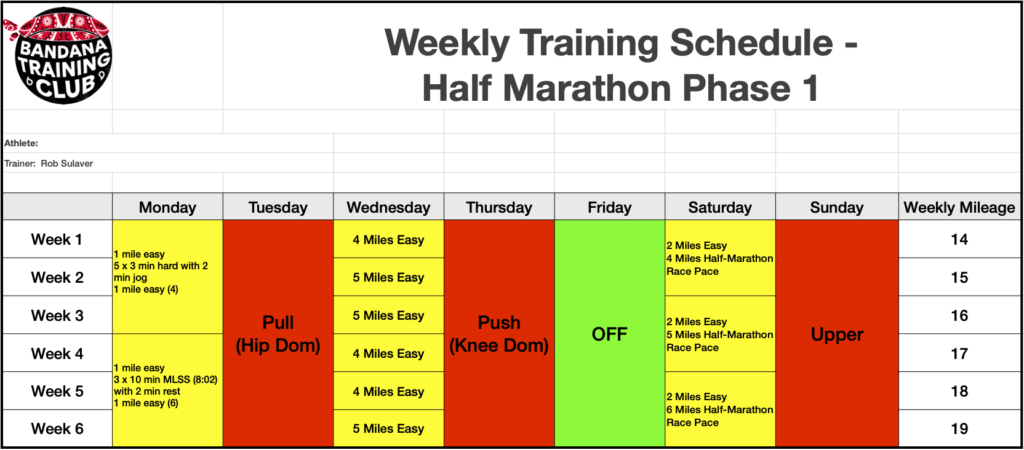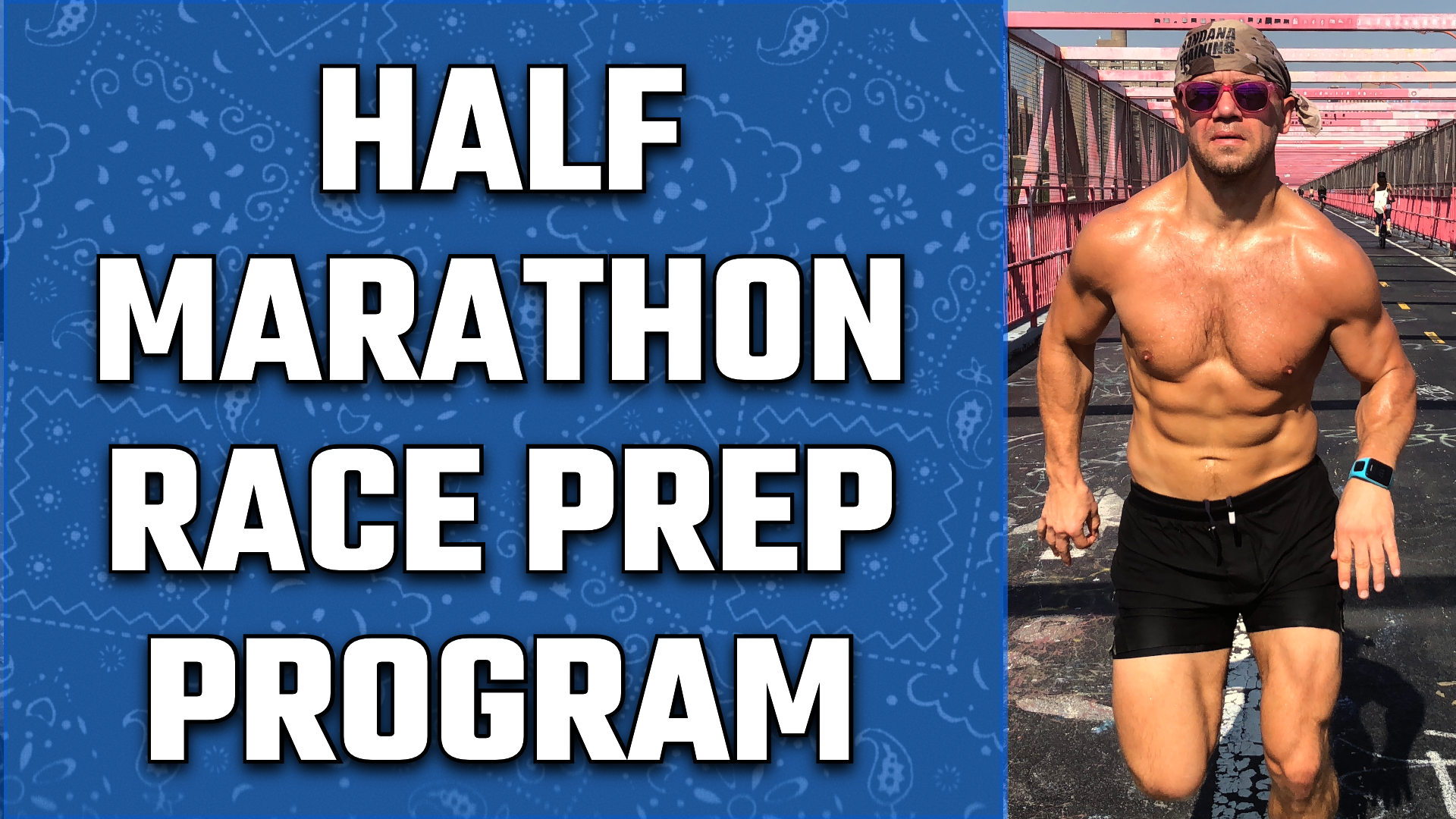Goal: This is an excellent program if you want to challenge yourself to run a competitive half-marathon and get serious about both your strength and cardiovascular training.
Equipment: Traditional Gym Equipment – Bench, Dumbbells, Barbell, a Cable Stack, Pullup Bar, Bands, Ab Cart, Physioball. Running shoes will also be helpful.
Workout per week: 6 total. 3x Runs (1x Progressive Distance Run, 1x Interval Run, 1x Easy Run) + 3x Strength Session (Pull + Hip Dominant, Push + Knee Dominant, Upper Body.)
Gym Membership Required? Yes. Or a well stocked home gym with the equipment listed above.
Length: 12 weeks
Half-marathon training is good stuff and I’ll tell ya why. Running 13.1 miles is something to be proud of, but it doesn’t beat you up the same way that marathon training does. It also doesn’t require quite so much volume which makes it a more reasonable commitment for our busy lives.
The intention of this program is to build you up to run a competitive half-marathon while maintaining your strength and lean muscle mass. I really love the cadence of this program – running 3 days per week and lifting 3 days per week – it keeps things balanced and interesting. Weekly mileage begins at 14 and increases by 1 mile per week until we get near the peak and taper of the program, so you should have a decent base before starting this program. If you haven’t been running at all, I suggest starting with the 10k program which begins at a more reasonable 8 miles per week.
For your training runs, you’ll have with an interval day (Monday), an easy run (Wednesday), and a progressive long run (Saturday.) Starting in week 4, your interval day will become a Maximum Lactate Steady State run which you can think of simply as long interval training (instead of 3 minute intervals, you’ll be doing 10 minute intervals.)
Easy runs should feel comfortable. Somedays you’re going to run a bit faster. Somedays you’re going to run a bit slower. That’s normal. Most runners need to be reminded to slow down on their easy runs. The intention here is more about accumulating miles and less about running fast.
The hard pace on your interval day should be challenging but consistent. In other words, the final interval shouldn’t be slower than the first interval. These will be the fastest you run all week. If you’re new to interval training, I’d rather see you start bit slower than you might expect and finish strong versus starting fast and pooing the bed.
For your long runs, the first two miles will be easy, and the bulk of the run will be done at your Half-Marathon Race Pace. If you don’t know your Half-Marathon Race Pace, make a conservative estimate. After your first race, you’ll know.
Here’s a pacing chart to help you dial in your various runs:

As for your resistance training, Tuesday is Pull + Hip Dominant, Thursday is Push + Knee Dominant, and Sunday is Upper Body. Notice that the Hip Dominant work is done the day before your easy run and the knee dominant work is done the day before your OFF day. This is certainly intentional. It is difficult to train legs while also training for a race, but it also exceptionally important to help you maintain strength and speed while preventing injury.
As always, here if you need me. Feel free to drop me a note on Instagram, Twitter, or Facebook.
When your legs get tired run with your heart,
Rob
Here’s our weekly training calendar:
Phase 1

Feel free to move your training days around if necessary, but try to follow the same cadence of non-consecutive runs and lift. I also like to prefer to my OFF day before my long run, but adjust as necessary.
As for Tuesday, Thursday, Sunday…

